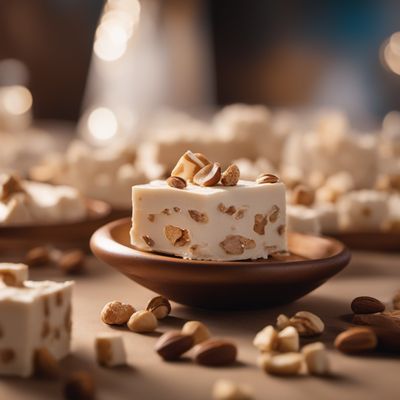
Recipe
Japanese-style Bouillabaisse
Umami Seafood Stew: A Japanese Twist on Bouillabaisse
4.8 out of 5
In the context of Japanese cuisine, this recipe takes inspiration from the classic French dish, Bouillabaisse, and infuses it with the umami flavors that are characteristic of Japanese cooking. This Japanese-style Bouillabaisse is a delightful seafood stew that combines the best of both culinary worlds.
Metadata
Preparation time
20 minutes
Cooking time
20 minutes
Total time
40 minutes
Yields
4 servings
Preparation difficulty
Medium
Suitable for
Pescatarian, Gluten-free, Dairy-free, Low-fat, Low-calorie
Allergens
Shellfish, Soy
Not suitable for
Vegan, Vegetarian, Paleo, Keto, Nut-free
Ingredients
While the original French Bouillabaisse is known for its Mediterranean flavors and ingredients like saffron and fennel, this Japanese adaptation incorporates traditional Japanese seasonings such as miso, soy sauce, and dashi. The result is a rich and flavorful seafood stew with a unique umami twist. We alse have the original recipe for Bouillabaisse, so you can check it out.
-
500g (1.1 lb) mixed seafood (such as shrimp, clams, mussels, and white fish fillets) 500g (1.1 lb) mixed seafood (such as shrimp, clams, mussels, and white fish fillets)
-
2 tablespoons vegetable oil 2 tablespoons vegetable oil
-
1 onion, thinly sliced 1 onion, thinly sliced
-
2 cloves garlic, minced 2 cloves garlic, minced
-
1 thumb-sized piece of ginger, grated 1 thumb-sized piece of ginger, grated
-
2 tablespoons miso paste 2 tablespoons miso paste
-
2 tablespoons soy sauce 2 tablespoons soy sauce
-
4 cups (950ml) dashi broth 4 cups (950ml) dashi broth
-
1 cup (240ml) sake (Japanese rice wine) 1 cup (240ml) sake (Japanese rice wine)
-
1 tablespoon mirin (Japanese sweet rice wine) 1 tablespoon mirin (Japanese sweet rice wine)
-
1 tablespoon sugar 1 tablespoon sugar
-
1 tablespoon sesame oil 1 tablespoon sesame oil
-
2 green onions, thinly sliced 2 green onions, thinly sliced
-
Fresh cilantro, for garnish Fresh cilantro, for garnish
-
Cooked white rice, for serving Cooked white rice, for serving
Nutrition
- Calories (kcal / KJ): 320 kcal / 1340 KJ
- Fat (total, saturated): 10g, 1.5g
- Carbohydrates (total, sugars): 20g, 5g
- Protein: 35g
- Fiber: 3g
- Salt: 2g
Preparation
-
1.Heat the vegetable oil in a large pot over medium heat. Add the sliced onion, minced garlic, and grated ginger. Sauté until the onion becomes translucent.
-
2.Add the miso paste and soy sauce to the pot, stirring well to combine with the onion mixture.
-
3.Pour in the dashi broth, sake, mirin, and sugar. Bring the mixture to a simmer and let it cook for 10 minutes to allow the flavors to meld together.
-
4.Add the mixed seafood to the pot and cook for an additional 5-7 minutes, or until the seafood is cooked through.
-
5.Stir in the sesame oil and green onions. Remove the pot from heat.
-
6.Serve the Japanese-style Bouillabaisse hot, garnished with fresh cilantro. Accompany with cooked white rice.
Treat your ingredients with care...
- Seafood — Ensure that the seafood is fresh and properly cleaned before adding it to the stew.
- Dashi broth — If you can't find dashi broth, you can substitute it with fish stock or vegetable broth.
- Miso paste — Use a good quality miso paste for the best flavor. Adjust the amount according to your taste preference.
- Soy sauce — Opt for low-sodium soy sauce if you are watching your sodium intake.
- Green onions — Slice the green onions thinly for a delicate garnish.
Tips & Tricks
- For a more intense seafood flavor, you can make a seafood stock by simmering shrimp shells, fish bones, and vegetable scraps in water for about 30 minutes. Strain the stock and use it in place of dashi broth.
- Feel free to add other seafood ingredients like squid or scallops to the stew for variety.
- Serve the Japanese-style Bouillabaisse with a side of pickled vegetables for a refreshing contrast.
- If you prefer a thicker stew, you can dissolve a tablespoon of cornstarch in water and add it to the pot during the last few minutes of cooking.
- Leftovers can be stored in the refrigerator for up to 2 days. Reheat gently on the stovetop before serving.
Serving advice
Serve the Japanese-style Bouillabaisse in individual bowls, accompanied by a mound of steamed white rice. The rice can be enjoyed on its own or mixed into the stew for a heartier meal. Garnish each bowl with fresh cilantro for a pop of color and added freshness.
Presentation advice
To enhance the presentation of the Japanese-style Bouillabaisse, arrange the seafood attractively on top of the stew. Sprinkle some additional sliced green onions and cilantro leaves on top for an elegant touch. Serve the stew in beautiful Japanese ceramic bowls to add a touch of authenticity to the presentation.
More recipes...
More French cuisine dishes » Browse all

Nougat
Nougat is a sweet confection made from sugar, honey, and nuts. It has a chewy texture and a nutty flavor.

Oeufs cocotte
Baked eggs
Oeufs cocotte is a classic French dish that is made with eggs that are baked in individual ramekins. It is a simple and elegant dish that is...

Gigot d'agneau pleureur
French weeping lamb leg
Gigot d'agneau pleureur is a classic French dish made from a leg of lamb that has been roasted with garlic and herbs. The dish gets its name from...
More Japanese cuisine dishes » Browse all

Funazushi
Funazushi is a traditional Japanese dish made from fermented fish and rice. It is a specialty of the Shiga prefecture of Japan.

Yaki imo
Yaki Imo
Yaki imo is a Japanese sweet potato that is roasted over an open flame until it is soft and caramelized.

Kagoshima ramen
Kagoshima Ramen
Kagoshima ramen is a type of ramen that originated in Kagoshima, Japan. It is known for its rich and savory tonkotsu broth and thin, straight noodles.










